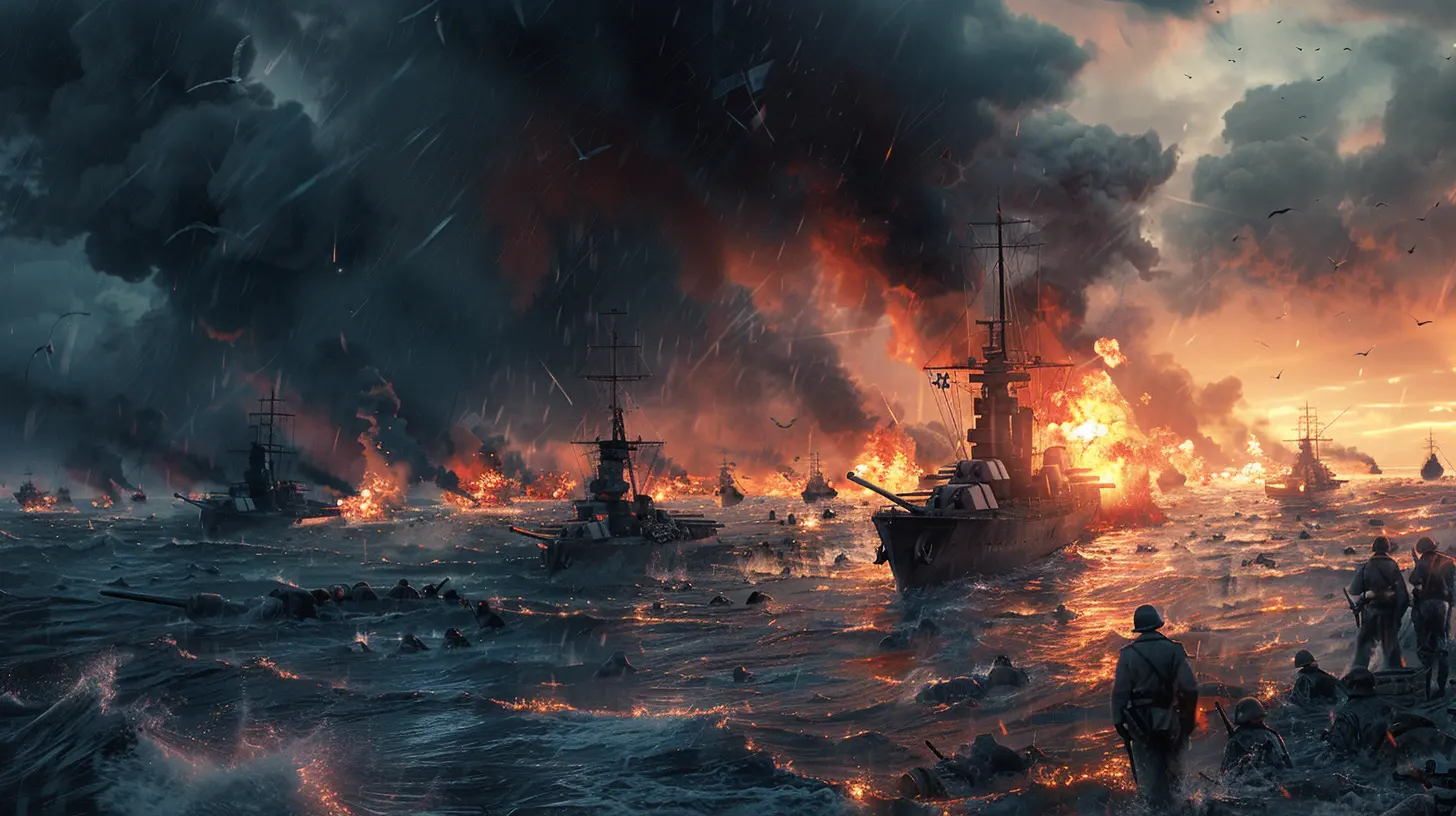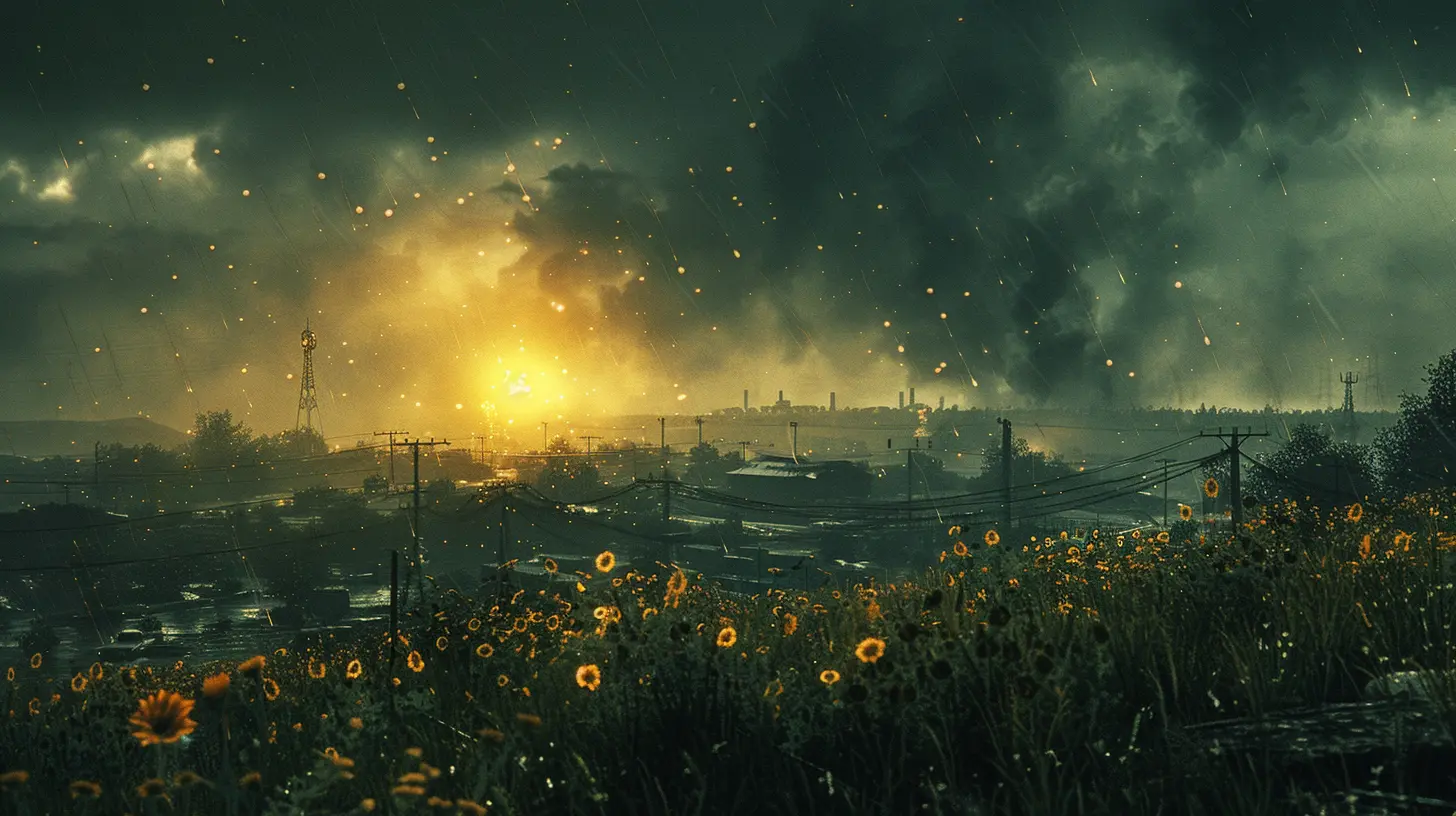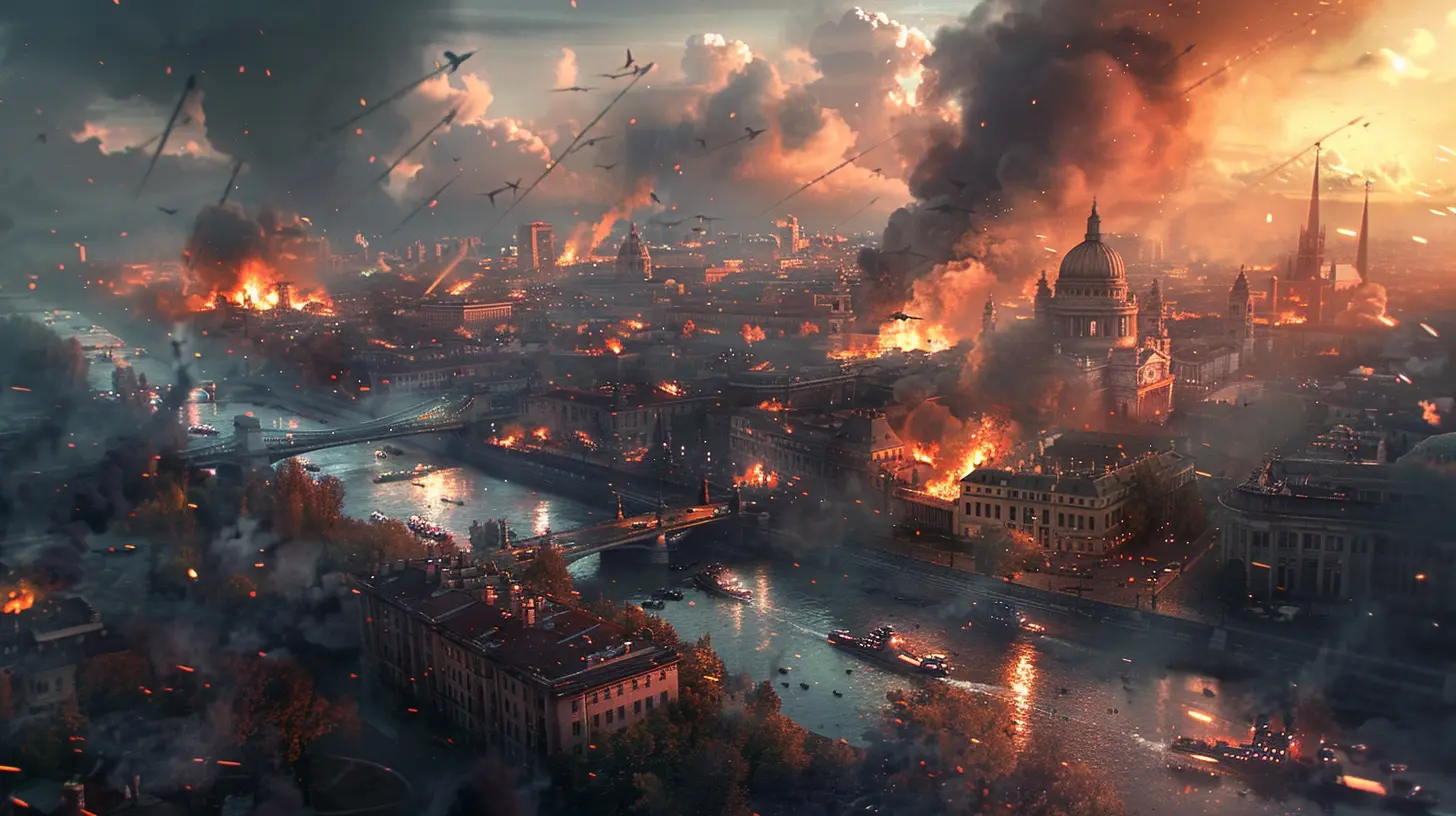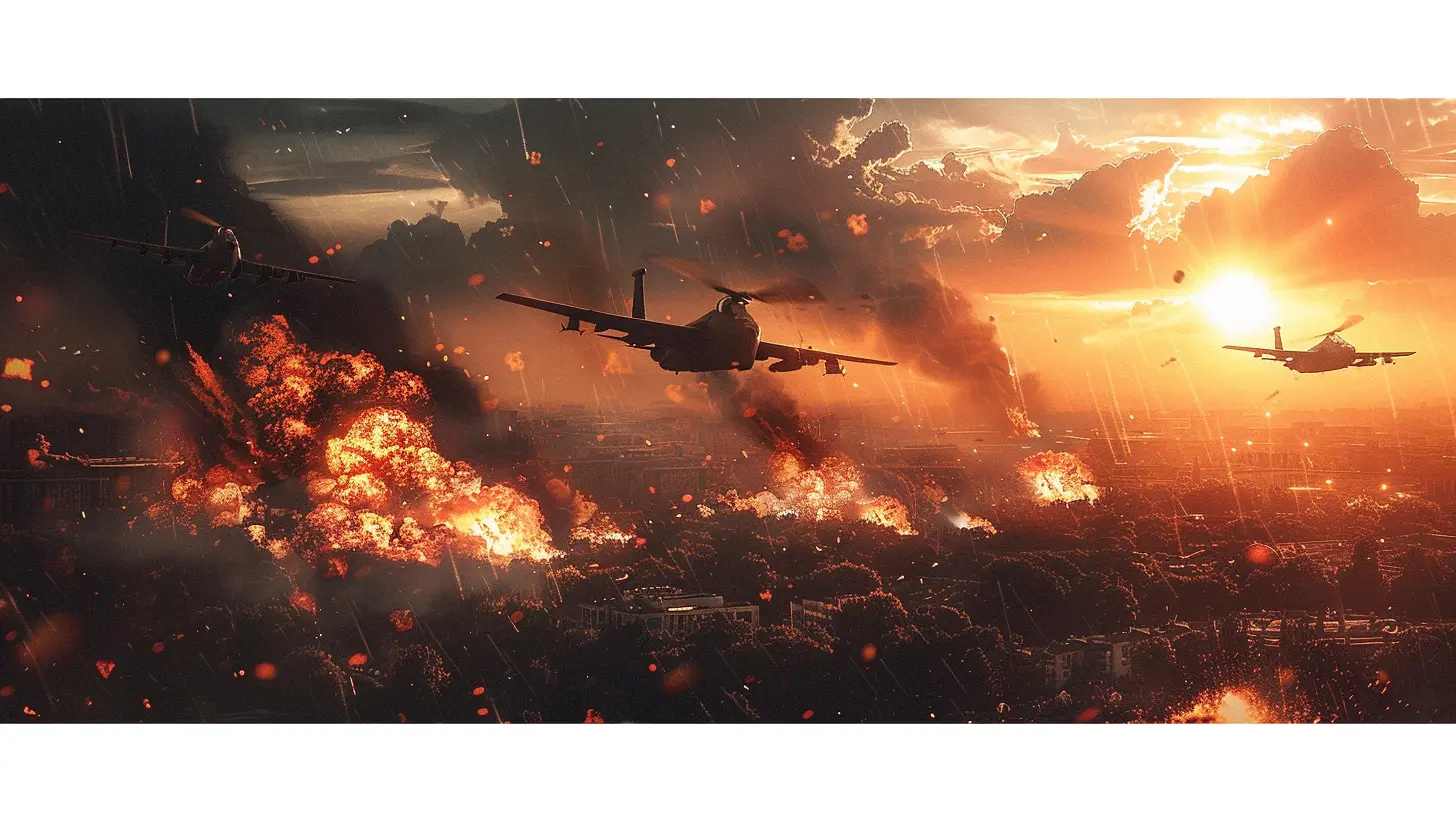How Weather Changes Strategy in War Simulations
28 October 2025
Imagine you're commanding a virtual army in a war simulation—tanks are rolling, troops are advancing, and air support is ready for precision strikes. Then, out of nowhere, a storm rolls in. Rain floods the terrain, turning roads into mud pits. Your air support gets grounded, your units slow down, and you're forced to rethink your strategy. Suddenly, weather isn't just a backdrop; it's a game-changer.
War simulations are complex by design, with countless variables to consider. Weather is one of the most overlooked but profoundly impactful factors in these games. It’s not just a cosmetic effect or added realism—it actively influences the mechanics, strategies, and outcomes. Let’s dive into why weather matters so much in war simulations and how it forces players to adapt their tactics.
Why Weather Isn’t Just a "Background Effect"
First of all, let’s clear something up. Weather in war simulations isn’t there just for aesthetic flair. Sure, a foggy battlefield looks cool, but in many games, weather goes beyond visuals. It actively changes the rules of engagement. Developers often weave weather mechanics into games to challenge players and immerse them in the unpredictability of real-world warfare.Think about it: How often do wars unfold in perfect sunshine? (Not often.) From icy Russian winters crippling Napoleon’s army to monsoons derailing military campaigns in Southeast Asia, history proves that weather can make or break a strategy. War simulations attempt to mirror this reality, forcing players to factor in weather like any military leader would.
The Many Faces of Weather in War Simulations
War simulations often feature different weather types, each with its own impact on gameplay. Let’s break this down:1. Rain: The Mud-Maker and Vision-Killer
Rain is one of the most disruptive weather conditions in war simulations. While it may seem harmless (it’s just water, right?), it can completely shake up how you approach the battlefield.- Mobility Issues: Rain can turn dirt roads into quagmires, slowing down vehicles and infantry. Suddenly, that lightning-fast tank assault you had planned feels like dragging bricks through molasses.
- Visibility: Rain often comes with reduced visibility. Snipers? Forget it. Air support? Grounded. This means battles become more about close-range combat and less about long-range precision.
- Morale: Many simulations factor in troop morale, and let’s face it—no one likes fighting while soaking wet and cold.
It’s like taking a Sunday drive and hitting a giant pothole—you’re forced to slow down and rethink your route.
2. Snow and Ice: The Great Equalizers
Snow and ice symbolize beauty in nature, but on the battlefield? Not so much. These conditions can be both your worst enemy or your secret weapon.- Slowed Movement: No matter how advanced your tanks are, icy terrain slows everything down. Even infantry struggles to stay coordinated in knee-deep snow.
- Logistical Nightmares: Cold weather increases fuel consumption, strains equipment, and reduces supply efficiency. Your well-oiled war machine starts running like an old clunker.
- Opportunities for Ambush: On the flip side, snow muffles movement. This means your stealth units can sneak up on enemies more effectively in winter weather.
Snow forces you to adapt, but it also rewards creative players who can turn its challenges into advantages.
3. Fog: The Ultimate Game of Hide-and-Seek
Fog is a master of misdirection. It’s like pulling a sheet over your chessboard during mid-play—suddenly, you can’t see what’s coming.- Restricted Vision: Fog messes with line-of-sight mechanics. Scouts become invaluable, and ranged units? Practically useless. You’re stuck relying on intuition and incomplete information.
- Stealth Opportunities: While the reduced vision puts everyone on edge, it’s a blessing for those who favor guerrilla warfare. Ambushes become easier than ever.
- Tactics Over Brute Force: Fog demands caution and clever positioning. Charging headlong into a low-visibility area can end disastrously.
In foggy conditions, your strategy shifts from "hit them hard" to "wait, where are they again?"
4. Wind: A Silent but Deadly Influence
Wind doesn’t seem like it would matter much, but in some war simulations, it can be a subtle disruptor.- Aerial Tactics: Wind can make air units hard to control or shift the trajectory of projectile weapons. Missiles may miss their mark entirely.
- Naval Battles: On the seas, the wind’s direction can dictate how easily ships can maneuver, making it a kingmaker in naval-heavy simulations.
- Fire Spread: Certain games have fire mechanics, and wind determines how fire spreads—a small flame can turn into a raging inferno faster than you can say "oops."
Wind is like the buddy who takes over the aux cord at a party—it doesn’t seem important, but it can completely change the vibe.
How Weather Forces Players to Adapt Strategies
Weather conditions in war simulations do more than slow you down or mess with visibility—they force you to adapt. It’s like playing poker but having to switch strategies because the rules changed mid-hand. Here’s how weather impacts decision-making.1. Timing Is Everything
Bad weather can throw your carefully planned timing out the window. That synchronized air and ground assault? Well, the rain just grounded your planes, and your tanks are stuck in mud. Players who can quickly adjust their plans to fit the new reality will usually come out ahead.2. Positioning Becomes Critical
When weather limits movement or vision, positioning becomes the name of the game. For example, when fog obscures the battlefield, holding high ground or chokepoints is invaluable. You start thinking like a chess player, not just a button-masher.3. Resource Management Gets Tricky
Some war simulations incorporate supply systems. Guess what? Weather loves to mess with those, too. Snow and cold drain resources faster, while rain might slow down supply convoys. Players need to make sure their troops are well-stocked and ready for prolonged engagements.4. Morale and Fatigue Come Into Play
In more realistic simulations, weather can drain a unit’s morale and lead to fatigue. Imagine a troop stuck in freezing conditions with no rest—they’re not going to perform as well as one in favorable weather. Smart players take morale into account and adjust their strategies to keep their units fighting fit.
Real-Life Inspiration for In-Game Weather Mechanics
Game developers don’t pull these weather mechanics out of thin air. They’re often inspired by real-world military history. Some examples include:- Napoleon’s Invasion of Russia: Harsh winters and icy roads decimated his troops.
- D-Day Landings (WWII): The operation was delayed due to poor weather, and even then, rough seas complicated the landings.
- Vietnam War: Unpredictable monsoons bogged down troops and equipment.
These historical lessons serve as blueprints for how unpredictable weather can add depth and realism to war simulations.
The Future of Weather in War Simulations
As gaming technology evolves, weather systems in war simulations are only going to get more realistic. With advancements in AI and physics, developers can create dynamic weather that changes over time, forcing players to constantly adapt.Imagine a battle starting on a sunny day, only for a thunderstorm to roll in midway. Roads flood, rivers overflow, and visibility plummets. By the time you adapt, the storm clears, and you’re left scrambling to adjust once again. This level of unpredictability is where future war simulations are headed.
Final Thoughts
Weather in war simulations isn’t just a side note—it’s a strategic element that can completely reframe how players approach battles. Whether it’s snow slowing your advance, fog hiding your enemies, or rain grounding your air force, weather adds layers of complexity and realism. It forces you to think like a real commander, juggling variables and making tough decisions on the fly.Next time you’re playing a war simulation and the weather changes, don’t curse your bad luck. Embrace it. Shift your strategy, outthink your opponent, and let the weather work for you instead of against you. After all, wars aren’t fought in a vacuum—they’re fought in the real world, where Mother Nature always has a say.
all images in this post were generated using AI tools
Category:
War GamesAuthor:

Madeleine McCaffrey
Discussion
rate this article
1 comments
Velma Sanders
What a fun read! Weather's impact on strategy adds a thrilling twist to war simulations. Can't wait to see how it shapes future gameplay! ☀️🌧️🎮
November 1, 2025 at 4:18 AM


